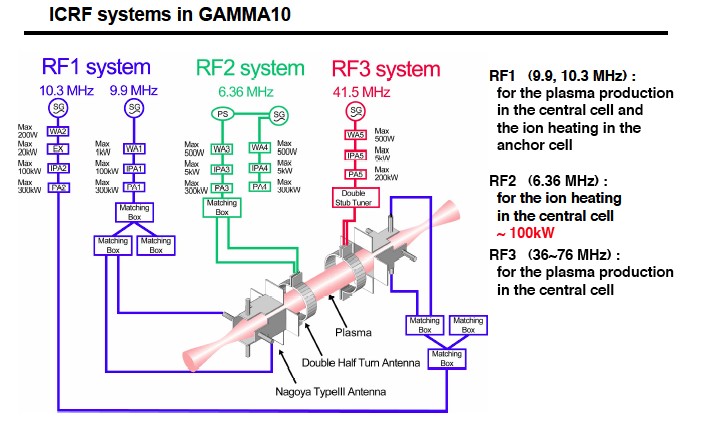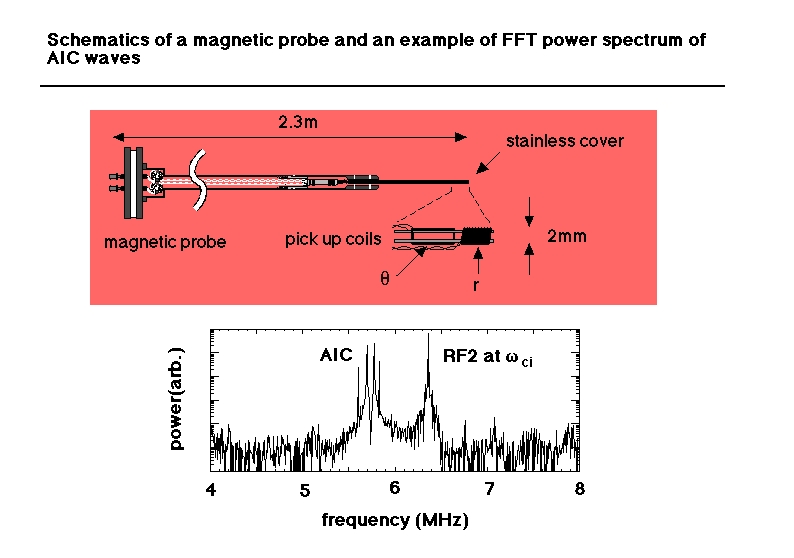Mirror confined plasma in GAMMA10
GAMMA10
Producing high density and high energy plasma with the plug and thermal barrier potentials is the main purpose of the GAMMA10 Tandem Mirror. The GAMMA10 has the central cell and plug-barrier cells which have the axisymmetric mirror configuration. The anchor cells between the central cell and plug-barrier cells provide the MHD stability as a whole with the minimum-B mirror configuration having non-axisymmetric magnetic field. The schematic drawings of the GAMMA10 are shown below [(a) the configuration of the magnetic coils, (b) the magnetic field lines, (c) the strength of the magnetic field, (d) the potential along the magnetic field line with ECH].

ICRF system in GAMMA10
For the plasma production, short pulse (~1msec) gun-produced plasmas are injected from both ends with H2 gas puffing. The initial plasma is then sustained by ICRF systems named RF1, RF2, and RF3 with H2 gas puffing. RF1 supplies its RF power through Nagoya-type III antennas for the plasma production in the central cell and the plasma heating in the anchor cells with frequencies of 9.9 and 10.3 MHz. The plasma heating in the central cell is provided by RF2 with the fundamental ion cyclotron frequency of 6.36 MHz through the double half-turn antennas. Finally, RF3 creates plasma particles and high energy ions with higher frequency (36 ~ 76 MHz).

RF fluctuations in GAMMA10
There are various perturbations observed in the mirror confined plasma. The most characteristic one for the mirror confined plasma is Alfven Ion Cyclotron (AIC) waves. AIC waves are generated by the strong anisotropy of ion distribution function. In the central cell of GAMMA10, the temperature anisotropy ~ 10 is achieved when RF2 is applied to heat up the confined ions. An example of FFT power spectrum of the signal obtained with a magnetic probe is shown below.
Also, the electrostatic perturbations (flute perturbation and drift perturbation) can be observed. By investigating these perturbation excited inside the plasma, we can improve the confinement of plasma particles.

References
M. Ichimura, et al., Phys. Plasmas 8 (2001) 2066.
K. Yatsu, et al., Nuclear Fusion 41 (2001) 613
R.Katsumata, et al., Phys. Plasmas 3 (1996) 4489.
Back to the top